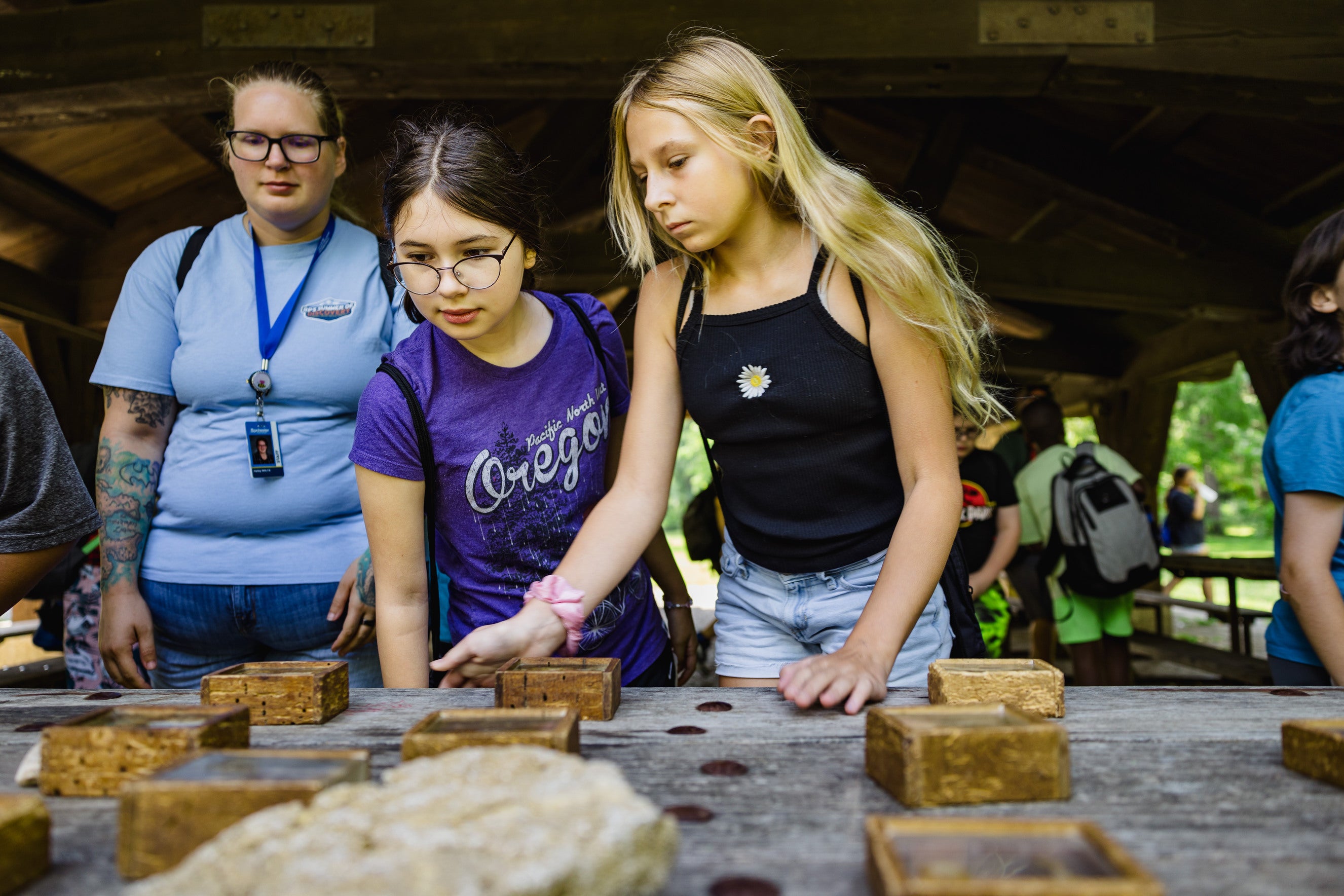What Do I Need to Know About Summer Learning?

Key Takeaways
Students from low-income families and communities have fewer opportunities to participate in enriching activities during the summer than their wealthier peers. They also lose more ground in math and reading.
Voluntary-attendance programs run by school districts are a promising solution because they can reach more students than traditional summer school or smaller programs run by nonprofits.
A multi-year study of programs for elementary school children in five cities found that students who attended for 20 or more days did better on reading and math tests than students who did not attend a program.
Successful summer programs:
- Plan early
- Work hard to recruit families
- Offer fun learning experiences students don’t get during the school year
- Make sure summer learning is a district priority all year long
- Build support from district leaders, elected officials, youth, and the community.
Why Summer Matters
School districts have typically thought of summer as a time for remedial work only. There is evidence, however, that summer can help districts face one of their biggest challenges: closing persistent opportunity gaps.
These gaps contribute to disparities in student achievement. They also mean that the array of enriching summertime experiences available to higher-income children are unavailable to children from lower-income communities. A 2020 study by the U.S. Census Bureau bears this out. It found that children living above the poverty level are more than twice as likely as children living below the poverty level to participate in clubs; or take part in music, dance, or other lessons; or play on sports teams.
Summer programs can be part of the solution. They can help students make up ground in core academic subjects. They can also provide activities—everything from theater and visual arts to nature walks and rock climbing—that children might otherwise miss out on.
Voluntary-attendance programs run by the school district are a promising option because they have the potential to reach more students than traditional summer school or smaller programs run by nonprofits.
A Summer Learning Toolkit
Find more than 50 tools to start or enhance summer efforts. The resources come from the work of summer learning experts and districts that took part in Wallace's National Summer Learning Project. The toolkit contains everything from tip sheets to staff handbooks.

The National Summer Learning Project
Until recently, research on summer programs focused mostly on programs that were either mandatory for students or not run by the district. To fill in the blank, Wallace launched the National Summer Learning Project, which ran from 2011 to 2017. A research team from the RAND Corp. studied five large voluntary summer learning programs aimed at rising fourth graders and led by public school districts in Boston; Dallas; Duval County (Jacksonville), Fla.; Pittsburgh; and Rochester, N.Y.
Project Goals
The goals of the project were to provide summer learning opportunities to thousands of young people in low-income communities, help the districts improve their programs, and understand their impact on students. The study had three phases:
- 2011-2012: RAND evaluated the programs and offered the districts feedback to strengthen them in future summers.
- 2013-2015: RAND studied the programs over two summers and measured student outcomes.
- 2017: RAND checked back in on students to see if the outcomes had lasted.
Common Features
The programs created by the districts in the study had several features in common:
- A mix of academics and enrichment activities
- Certified teachers providing academic instruction
- Small classes (no more than 15 students)
- Full-day programming, five days a week, except holidays, for five to six weeks
- At least three hours of instruction in math and reading per day
- No fee for participation
- Free transportation and meals.
These features reflected what experts and evidence have found about successful summer programs. They also helped remove barriers that could have prevented families from participating, including high cost and lack of transportation.
Districts had the freedom to make decisions about aspects of the programs. They chose from a list of established math and reading curricula. And each district had its own approach to enrichment. Some focused on the arts. Others offered students a menu of options, including cooking, computer coding, and sailing.
The Benefits of Summer Learning
Students who attended a summer program in the National Summer Learning Project for 20 or more days in 2013 did better on state math tests given that fall and the following spring than similar students who were not assigned to a program. Results were even more striking the next year. Frequent attenders in 2014 outperformed comparison students in both math and reading on both the fall and spring tests. The difference in performance translates to 20 to 25 percent of the typical annual gain in math and 20 to 23 percent of the typical annual gain in reading. Frequent attenders also got higher scores on social-emotional assessments.
The Challenge of Boosting Student Attendance
Districts in the National Summer Learning Project learned that not every student will attend frequently—and improving attendance is difficult. About 60 percent of participating students were frequent attenders. Despite efforts by the districts to raise these rates, average daily attendance remained more or less flat from 2011 to 2014.
Learn more about the National Summer Learning Project
Lessons: Creating and Running Effective District Programs
Over the seven years of the National Summer Learning Project, five central lessons emerged. These can help other districts design and run effective programs:
Early planning is crucial. Starting to plan for summer programming no later than January gives districts the lead time they need to pull together a curriculum, staff, and other essentials and deal with obstacles.
Successful summer programs focus on quality and what’s special about summer. The keys to a high-quality summer program include:
- Using a curriculum specifically meant for summer
- Recruiting the best teachers
- Providing at least 90 minutes of math and two hours of reading a day
- Creating a warm environment for students
- Offering engaging enrichment activities they wouldn’t normally get to try.
Enrolling students in voluntary programs takes intensive recruiting. The districts in the National Summer Learning Project held focus groups to understand families’ attitudes about summer. They then came up with messages that addressed parents’ needs and concerns. They also reached out directly to students to get them excited about their programs. It took more than one form of communication to attract and keep families’ attention.
Summer can and should be part of a district's year-round operations. Many districts start from scratch each year planning and finding funding for summer learning. Summer program leaders used three main strategies to change this and make summer a routine part of district work:
- They gathered data to show the value of the program and connect it to larger district goals.
- They included all relevant departments in planning.
- They involved expert staff, like grant writers and curriculum developers, in supporting the program.
Support from decision makers, youth, and the community can help summer programs secure long-term funding. Building strong relationships with district and state education officials, mayors, and lawmakers is one way program leaders get summer learning into local budgets. Another is to organize a citywide advocacy campaign that gives youth and community members a voice.
A Variety of Evidence-Based Summer Programs
In addition to district efforts, many other types of programs dot the summer landscape. The age groups they target go from pre-K through high school. Their settings range from schools and camps to homes and workplaces. They focus on an variety of subjects. Reading, math, science, careers, art, robotics, social-emotional well-being, and leadership are all in the mix.
A RAND study found 43 programs that meet the evidence standards to qualify for funding under the federal Every Student Succeeds Act. This means there is research indicating that they are effective. Four programs met the most rigorous research standards. Two of them received Wallace support: the National Summer Learning Project and READS for Summer Learning, an at-home reading program for elementary school students.
Featured Resources






